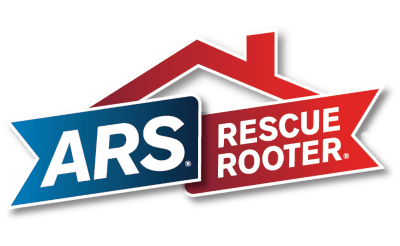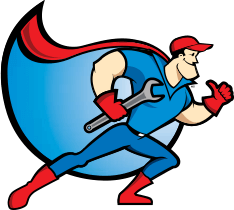 Heating and Furnace
Heating and Furnace
Furnace Components
When you call in your local ARS®/Rescue Rooter® technician, you can look forward to quality service and a plain explanation of all the gas furnace or electric heater components and concepts you need to know. That includes add-ons like humidifiers and carbon monoxide detectors, like Nest Protect.
Nevertheless, you can contribute to the conversation—and an even faster solution—if you familiarize yourself with parts that are crucial for your heating system's effectiveness. These are the five main aspects you should know:
Thermostat
You could have a brand new, high-efficiency furnace and pristine ductwork, but you're not going to feel any warmth if your furnace thermostat doesn't send the signal for heating to begin when needed.
Older heating systems are often controlled by electro-mechanical thermostats, whereas newer systems are often controlled digitally—sometimes with the latest Wifi-enabled thermostats, like Nest. Whichever kind you have, various different thermostats do essentially the same job: controlling the temperature of your home by starting or shutting down your heating system.
- Electro-mechanical thermostats have small metal coils and a mercury tube inside. Depending on the temperature of the room in which the thermostat is situated, the coils will either contract or expand, pushing the mercury to one end of its tube or the other. That's what tells your HVAC system to either turn on or off.
- Digital thermostats are a lot more accurate than their electro-mechanical predecessors. Virtually all are programmable, allowing you to set running times for your system to maintain a specified temperature. This extra control empowers you to reduce energy costs by minimizing your heating (and cooling) when you don't need as much.
- Wifi-enabled thermostats are a great way to control your home's temperature when you're not there. That means if there's a cold snap while you're out, you can make sure you come home to a warm, welcoming environment. Even better, many smart and connected thermostats "learn" your routine—including times when the house is unoccupied—and automatically adjust heating and cooling schedules to save you money on your utility bills. Unlike other programmable thermostats, the Nest thermostat is programmed simply by using it. After a week or so, the Nest will have programmed itself!
Furnace
What is a furnace? Simply put, a furnace draws air in from the living space, heats it up and returns it to warm the home. Most furnaces use gas—either natural gas or propane—ignited by the pilot light to warm the air. Electric furnaces use heating elements, or strips, instead. Both types of fuel options result in the warm air being blown into the living space through ductwork.
For furnaces that use fossil fuels, we also recommend installing a carbon monoxide detector, such as the Nest Protect®. This important device will notify you if CO is detected and reaching unsafe levels.
There are a few types of furnaces, depending on your home and where you live:
Upflow furnace
An upflow furnace takes cool air in from the bottom and discharges it from the top. These are generally placed in the home’s basement. Because hot air naturally rises and cold air sinks, upflow furnaces have to perform less work and tend to have longer life spans than the other configurations. However, if you have no basement or crawlspace, an upflow furnace may not be an option.
A gravity furnace is a type of upflow furnace that does not use a blower motor, but instead uses physics—the heated air rises through ducts and cooled air sinks through return vents.
Horizontal flow (or cross-flow) furnace
A horizontal furnace lies on its side, pulling cool air from one side and pushing warm air out of the other. Horizontal furnaces are often used in locations where there is limited space and may be found in a crawl space or a closet.
Downflow furnace
In this configuration, the furnace takes cool air from the top and discharges warm air from the bottom. Downflow furnaces are generally found in homes with no basement and are usually placed in an attic.
Boilers and Radiators
Many newer homes are heated by hot water or steam, two types of "sealed water-circulating systems" that circulate water heated by a boiler through pipes to radiators, which radiate the heat throughout your home.
Air Handler
Furnace air handlers are a critical component of any heating or HVAC system. They make the difference between strong flows of warm air that warm you up quickly and barely-there breezes that do little to increase the temperature—or your comfort.
Air-handling units usually consist of a blower, heating/cooling elements, filter racks or chambers, and dampers. They push air into your home's ductwork in order to distribute heat evenly throughout.
- In forced-air furnaces, the air handler is a component part that blows hot air out—and cool air, too, if your AC unit as part of the same system.
- If you have a heat pump rather than a forced-air furnace, you may have a stand-alone air handler that blows hot air through your home's ductwork.
Air Ducts
The design and condition of your furnace air ducts may depend on the age of your home. More new homes are being built with ductwork that travels through the conditioned living space. So by constructing an insulated zone between ceiling joists and a dropped ceiling—or between the walls in the corners of a room—ducts can now be placed where any leaks or lost air will actually contribute to the overall heating or cooling effect. But in other situations, air loss is not a desirable thing:
- Ducts that are poorly planned or installed may have loosely sealed joints that allow precious heated or cooled air to escape.
- Time can have the same effect on old ductwork, which may be unlikely to meet current standards.
- Even brand new ducts can become less efficient when placed in areas of extreme temperature highs and lows, such as attics.
- (Click here for ways to reduce the temperature in your attic.)
Call the heating expertts
No matter what type of furnace or other central heating system you have, be sure to have regular maintenance performed to help extend the life of your equipment. Remember, air filtration is critical to effective heating, so change your filters often and have your home's heater professionally serviced before every heating season.
Call 866-399-2885 to set up an appointment with your local ARS®/Rescue Rooter® heating specialist if you have questions about your system.





Step 2 of 2